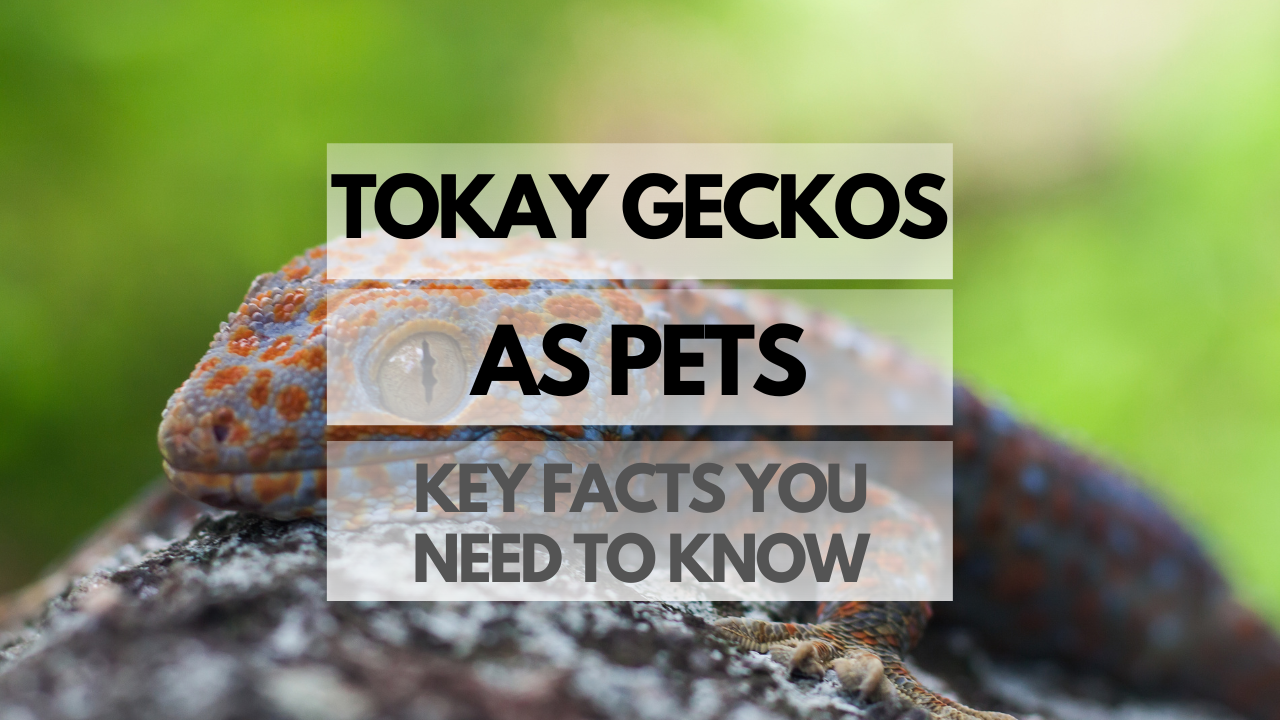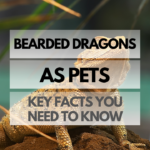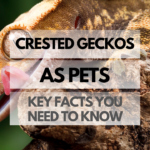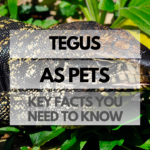Native to the tropical rainforests of Southeast Asia, Tokay Geckos have captured the hearts of reptile enthusiasts worldwide. Known for their striking appearance and feisty temperament, these fascinating creatures make for a challenging yet rewarding pet experience. In this article, we’ll explore everything you need to know about Tokay Geckos as pets, from their behavior and care requirements to the various species and color morphs available.
Quick Reference Table: Tokay Gecko Facts
| Fact | Details |
|---|---|
| Scientific Name | Gekko gecko |
| Native Habitat | Southeast Asia |
| Size | 8-15 inches (20-40 cm) |
| Lifespan | 10-15 years or longer |
| Behavior | Nocturnal, territorial, vocal |
| Diet | Insectivorous |
| Popular Morphs | Normal, patternless, albino |
How Are Tokay Geckos as Pets?
Tokay Geckos can be a fascinating pet for dedicated and responsible owners who are willing to invest time and effort in meeting their specific care requirements. They are best suited for experienced reptile keepers due to their feisty nature and specialized care needs.
Pros and Cons of Tokay Geckos
Pros:
- Beautiful and unique appearance
- Intelligent and engaging behavior
- Long lifespan with proper care
Cons:
- Feisty temperament, may bite if threatened
- Require a specialized diet and habitat setup
- Not suitable for novice reptile keepers
Tokay Gecko Behavior and Temperament
Tokay Geckos are known for their territorial and vocal behavior, particularly at night. They can be aggressive when threatened, so proper handling techniques and patience are essential. With consistent, gentle interaction, they can learn to tolerate handling and become more sociable over time.
How Much Do Tokay Geckos Cost?
The price of a Tokay Gecko can vary depending on factors such as age, size, and color morph. Generally, they range from $20 to $100. Initial setup costs, including the enclosure and accessories, can range from $200 to $500. Ongoing expenses include food, supplements, and electricity for heating and lighting the habitat.
Tokay Gecko Lifespan: Time and Commitment
With proper care, Tokay Geckos can live for 10-15 years or longer in captivity. Owning a Tokay Gecko is a long-term commitment that requires consistent attention to their housing, diet, and overall well-being. Regular interaction is necessary to develop trust and socialize your gecko.
Tokay Gecko Size
Adult Tokay Geckos typically range from 8 to 15 inches (20 to 40 cm) in length, with males being larger than females. Their size makes them one of the largest species of geckos, which contributes to their impressive presence as pets.
Tokay Gecko Species
There is only one species of Tokay Gecko (Gekko gecko), but they come in various color morphs that showcase different patterns and hues.
Normal Morph
The normal morph features a vibrant blue or gray background with orange or red spots, giving them their iconic appearance.
Patternless Morph
Patternless morphs lack the distinct spots found on normal Tokay Geckos, instead displaying a solid blue or gray color.
Albino Morph
Albino Tokay Geckos have reduced pigmentation, resulting in a pale, washed-out appearance. This morph is relatively rare and highly sought after by collectors.
Tokay Gecko Colors, Looks and Appearances
Tokay Geckos are known for their striking colors and patterns, which can include various shades of blue, gray, orange, and red. Their large, adhesive toe pads allow them to cling to vertical surfaces, and their nocturnal eyes give them a mysterious and captivating appearance.
Tokay Gecko Care Guide
Caring for a Tokay Gecko requires attention to detail and a commitment to providing a suitable habitat, diet, and environment for your pet. The following sections outline the key aspects of Tokay Gecko care.
Tokay Gecko Habitat: Tank and Housing
A proper habitat setup is crucial for the health and well-being of your Tokay Gecko. This includes providing the right tank size, enclosure type, substrate, heating, lighting, humidity control, and furnishings.
Appropriate Tokay Gecko Tank Size
For a single adult Tokay Gecko, a minimum tank size of 20 gallons is recommended, with a larger size (30-40 gallons) preferred for optimal comfort. Vertical space is essential, as Tokay Geckos are an arboreal species and enjoy climbing.
Types of Enclosures
Glass or acrylic terrariums with front-opening doors and good ventilation are ideal for housing Tokay Geckos. Screen-top enclosures can also work, but they may require additional measures to maintain proper humidity levels.
Substrate Options
Substrate options for Tokay Geckos include coconut coir, cypress mulch, or a mix of organic soil and coconut coir. The substrate should be able to hold moisture to help maintain humidity levels while also allowing for proper drainage.
Heating and Lighting Requirements
Tokay Geckos require a basking area with a temperature of 85-90°F (29-32°C) and a cooler area with a temperature of 75-80°F (24-27°C). Nighttime temperatures should not drop below 70°F (21°C). A heat lamp or ceramic heat emitter can be used to provide the necessary heat gradient. UVB lighting should also be provided to support proper vitamin D3 synthesis and calcium absorption.
Humidity and Temperature Control
Maintaining a humidity level of 60-80% is essential for Tokay Geckos. This can be achieved through daily misting, a moist substrate, and/or the use of a humidifier. A digital hygrometer and thermometer should be used to monitor humidity and temperature levels within the enclosure.
Furnishings and Decorations
Tokay Geckos appreciate a well-furnished enclosure with plenty of climbing opportunities. Provide branches, cork bark, and foliage for hiding and climbing. A secure hide should also be provided to give your gecko a private retreat.
Cleaning and Maintenance
Maintain a clean and healthy environment for your Tokay Gecko by spot-cleaning the enclosure daily, removing any waste or uneaten food. A full substrate change and enclosure cleaning should be done every 1-2 months or as needed.
Tokay Gecko Food: Diet and Nutrition
Tokay Geckos are primarily insectivorous, requiring a diet of live insects to thrive. Proper nutrition is vital for their health and well-being.
Feeding Frequency and Schedule
Adult Tokay Geckos should be fed every 2-3 days, while juveniles may require daily feedings. Offer an appropriate number of insects based on the size and appetite of your gecko.
What do Tokay Geckos Eat?
Offer a variety of live insects such as crickets, roaches, mealworms, and waxworms. It is important to gut-load the insects with nutritious food before feeding them to your gecko. This ensures that your Tokay Gecko receives the necessary nutrients for optimal health.
Tokay Gecko Treats
Occasionally, you can offer your Tokay Gecko treats such as hornworms or butterworms as a supplement to their regular diet. These insects are high in moisture and can help support proper hydration.
Foods to Avoid
Avoid feeding your Tokay Gecko insects caught from the wild, as they may carry parasites or pesticides. Additionally, do not offer non-insect food items, as they are not part of a Tokay Gecko’s natural diet.
Supplements and Vitamins
It’s essential to provide your Tokay Gecko with the necessary supplements and vitamins to support their health. Dust the insects with a calcium supplement at every feeding and a multivitamin supplement once or twice a week. This will help prevent common health issues, such as Metabolic Bone Disease, and promote overall well-being.
Hydration
While Tokay Geckos primarily obtain their water from their food, it’s important to ensure they stay properly hydrated. Provide a shallow water dish with clean, fresh water, and mist the enclosure daily to maintain humidity levels. The misting process also encourages your gecko to drink droplets of water from the surfaces within their habitat, further supporting their hydration needs.
Handling and Socialization
Taming and Bonding
Taming and bonding with your Tokay Gecko can be a challenging but rewarding experience. These geckos are known for their feisty nature and can be defensive when first introduced to their new home. To build trust and develop a bond, approach your Tokay Gecko with patience and consistency. Start by observing them from a distance and gradually work your way closer over time. Offer food from a pair of tongs to establish positive associations with your presence.
Safe Handling Techniques
When handling a Tokay Gecko, it’s essential to use gentle and confident techniques. Approach your gecko from the side, avoiding sudden movements that may startle it. Gently scoop it up with both hands, supporting its body and limbs. Avoid grabbing or holding the gecko by its tail, as it may detach as a defense mechanism. Limit handling sessions to brief periods to minimize stress for your pet.
Signs of Stress and Illness
Recognizing signs of stress and illness in your Tokay Gecko is crucial for their well-being. Some common signs include loss of appetite, lethargy, irregular shedding, labored breathing, or changes in droppings. If your gecko exhibits any of these symptoms, consult a reptile veterinarian for proper treatment and care.
Introducing Tokay Geckos to Other Pets
Introducing a Tokay Gecko to other pets requires careful planning and consideration of each animal’s needs and temperament. It is generally not recommended to house multiple Tokay Geckos together, as they can be territorial and aggressive towards one another. If you have other types of pets, ensure they are kept separate and supervise any interactions closely to prevent injury or stress to either party.
Health and Wellness
Common Health Issues
Some common health issues in Tokay Geckos include metabolic bone disease, respiratory infections, parasitic infections, and improper shedding. Providing a clean and properly maintained living environment, monitoring temperature and humidity levels, and offering a balanced diet can help prevent many of these health issues.
Signs of a Healthy Tokay Gecko
A healthy Tokay Gecko should have clear eyes, a well-rounded body, and an alert and active demeanor. Regular shedding and a strong grip with their toes are also signs of good health. Monitor your gecko’s behavior and appearance to ensure they remain in optimal condition.
Preventative Care
Preventative care for your Tokay Gecko includes maintaining a clean and well-ventilated enclosure, providing a diet rich in calcium and other nutrients, and ensuring proper temperature and humidity levels. Regularly inspect your gecko for signs of illness and consult a reptile veterinarian if you have any concerns.
Finding a Reptile Veterinarian
It’s essential to find a qualified reptile veterinarian who is experienced in treating Tokay Geckos and other reptiles. Consult local reptile clubs, online forums, or other reptile enthusiasts for recommendations. Establish a relationship with a reptile veterinarian early on to ensure your Tokay Gecko receives the best care possible.
Breeding and Reproduction
Determining Gender
Sexing Tokay Geckos is relatively straightforward. Males have a broader head and a distinct flat, V-shaped row of preanal pores near the base of the tail. Females have a narrower head and lack visible preanal pores.
Mating Behavior and Courtship
Courtship in Tokay Geckos involves vocalizations, displays, and physical contact. Males will call loudly to attract females and may engage in head-bobbing, tail-wagging, and other displays. Physical contact and mating can be aggressive, with the male gripping the female by the neck.
Gravidity and Egg-laying
After successful mating, female Tokay Geckos will become gravid and lay a pair of eggs approximately 30 days later. They typically lay their eggs in crevices or other secure locations and attach them to the surface with a sticky secretion.
Incubation and Hatching
Incubation for Tokay Gecko eggs lasts between 60 to 90 days, depending on temperature and humidity. Once the eggs hatch, the baby geckos will emerge fully formed andindependent, ready to face the world.
Caring for Hatchlings
Hatchling Tokay Geckos are self-sufficient and do not require parental care. Provide a separate enclosure with appropriate temperature, humidity, and hiding spots to ensure their safety and well-being. Offer smaller-sized prey items and monitor their growth and development closely.
Are Tokay Geckos Legal?
Before considering a Tokay Gecko as a pet, it’s essential to research local and regional laws regarding their legality. In some areas, they may be classified as invasive species, and ownership could be restricted or prohibited. Always verify the legal status of Tokay Geckos in your area before acquiring one as a pet.
Popular Names for Tokay Geckos
Choosing a fun and creative name for your Tokay Gecko can be a delightful part of the bonding process. Here is a list of interesting names to consider:
- Sticky
- Bluebell
- Echo
- Jade
- Gecko Gatsby
- Pixel
- Chameleon
- Wink
- Spot
- Freddie
Conclusion: Should You Own Tokay Geckos as Pets?
While Tokay Geckos can be challenging pets due to their feisty nature and specific care requirements, they can also be incredibly rewarding for dedicated and responsible owners. With proper care and attention, a Tokay Gecko can become a fascinating and unique addition to your home. If you’re prepared to invest the time and effort into providing a suitable environment and meeting their needs, a Tokay Gecko may be the perfect pet for you.
FAQ for Pet Tokay Geckos
- Q: Are Tokay Geckos good pets?
- A: Tokay Geckos can be challenging but rewarding pets for dedicated and responsible owners who are willing to invest time and effort in meeting their specific care requirements.
- Q: Can Tokay Geckos eat grapes, bananas, strawberries, apples, spinach, tomatoes, carrots, cucumbers, watermelon, broccoli, blueberries, celery, cabbage, cilantro, kale, blackberries, oranges, avocados, corn, or asparagus?
- A: Tokay Geckos are primarily insectivorous, meaning their diet consists mainly of insects. Fruits and vegetables are not suitable food items for them. Instead, offer a variety of insects such as crickets, mealworms, and roaches.
- Q: How often do Tokay Geckos eat?
- A: Adult Tokay Geckos should be fed every other day, while younger geckos may require daily feeding. Adjust feeding frequency based on your gecko’s age, size, and activity level.
- Q: How long do Tokay Geckos live?
- A: With proper care, Tokay Geckos can live for 10-15 years or longer in captivity.
- Q: Where are Tokay Geckos native?
- A: Tokay Geckos are native to Southeast Asia, including countries like Indonesia, the Philippines, and parts of India.
- Q: Are Tokay Geckos friendly?
- A: Tokay Geckos are known for their feisty nature and may take time to become accustomed to their owner’s presence. With patience and consistent interaction, they can develop trust and become more sociable.
- Q: Do Tokay Geckos bite?
- A: Tokay Geckos may bite when they feel threatened. Proper handling techniques and building trust can help minimize the risk of being bitten.
- Q: Do Tokay Geckos like to be held?
- A: Tokay Geckos generally prefer not to be handled frequently. Keep handling sessions brief and infrequent to minimize stress for your pet.
- Q: Are Tokay Geckos nocturnal?
- A: Yes, Tokay Geckos are primarily nocturnal, meaning they are most active during the night and rest during the day.
- Q: Do Tokay Geckos pee?
- A: Tokay Geckos excrete a combination of urates (semi-solid white waste) and feces, which they usually deposit in the same area of their enclosure.
- Q: Do Tokay Geckos hibernate?
- A: Tokay Geckos do not hibernate but may become less active during cooler periods. Ensure proper temperatures are maintained in their enclosure to support their well-being.
- Q: Do Tokay Geckos make noise?
- A: Tokay Geckos are known for their loud vocalizations, especially during mating season. Males will call loudly to attract females or communicate with other geckos in their territory.
- Q: Are Tokay Geckos venomous or poisonous?
- A: Tokay Geckos are neither venomous nor poisonous. However, their bite can be strong and painful, so proper handling techniques are important to avoid injury.
- Q: Are Tokay Geckos smart?
- A: Tokay Geckos are intelligent and adaptable creatures, capable of learning and responding to their environment, including recognizing their owner’s presence over time.
- Q: Do Tokay Geckos need heat at night?
- A: Tokay Geckos require a temperature gradient in their enclosure, with a warmer basking area and a cooler area. Nighttime temperatures should be slightly lower than daytime temperatures but should not drop below 70°F (21°C).
- Q: Do Tokay Geckos lay eggs?
- A: Yes, female Tokay Geckos lay eggs after successful mating. They typically lay a pair of eggs in secure locations and attach them to surfaces with a sticky secretion.
- Q: Do Tokay Geckos smell?
- A: Tokay Geckos themselves do not have a strong odor.However, maintaining proper hygiene in their enclosure, including regular cleaning and removal of waste, is essential to prevent unpleasant smells.









